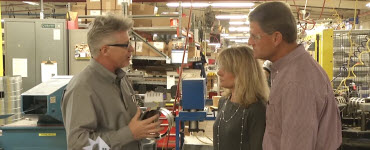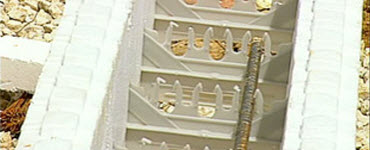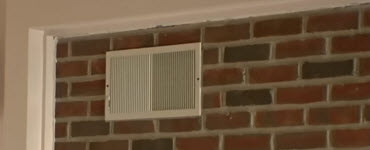Roof and attic
Your roof and attic play the most crucial role in your home's energy efficiency system, reducing your energy costs during the winter and summer.
Your roof and attic will play the most crucial role in your home's energy efficiency "system," reducing your energy costs not only during the winter heating season, but during the summer as well.
The standard is a minimum of R-44 attic insulation, or R-46 for optimum energy savings.
Choosing an eight- or 12-inch "raised-heel" roof truss allows extra room to add insulation along the edges of the attic. This construction option might increase your initial costs by about $500, but the costs can be paid back in energy savings within the first year.
Make sure your builder properly insulates your high ceilings with rigid foam board insulation, while allowing for adequate ventilation.
Light-colored shingles, on the other hand, can help reduce attic temperatures by reflecting the sun's rays.
The standard is a minimum of R-44 attic insulation, or R-46 for optimum energy savings.
Raising the roof
The area where the roof meets the sidewalls is prime spot for air leaks, so ask your builder about "raising the roof." You can choose from a standard four-inch truss, and eight-inch "energy-efficient" truss and the "super-efficient" 12-inch version.Choosing an eight- or 12-inch "raised-heel" roof truss allows extra room to add insulation along the edges of the attic. This construction option might increase your initial costs by about $500, but the costs can be paid back in energy savings within the first year.
Cathedral and vaulted ceilings
Keep in mind that "raising the roof" doesn't mean raising the ceiling. While cathedral and vaulted ceilings are very popular in new homes, they greatly minimize the area available for attic insulation.Make sure your builder properly insulates your high ceilings with rigid foam board insulation, while allowing for adequate ventilation.
Don't forget the shingles
The type of shingles on your roof can also affect energy use. Dark gray or black shingles will trap a large amount of heat during the summer, but absorb only a small amount during the winter when it's needed.Light-colored shingles, on the other hand, can help reduce attic temperatures by reflecting the sun's rays.
More from this category
Air quality and ventilation in new homes
New, energy-efficient homes need new solutions to circulate and ventilate the air inside the home.
Building an energy-smart house
Historic preservation
A preservation expert shares how to restore an older home economically and energy efficiently.
Insulated concrete forms
An insulated concrete form (ICF) system eliminates the cold drafts typical of wood-frame construction.
Trombe wall
Using the sun's stored energy to heat your home reduces your conventional energy consumption.
Habitat for Humanity
Habitat for Humanity is an organization that provides simple, sturdy homes. Learn how energy efficiency is a key factor in building these homes.
Geodesic domes
A geodesic design uses interconnected triangles to create a strong, environmentally friendly structure.
Energy efficient kitchen remodel
This kitchen remodel features a new window, energy-efficient lighting, new appliances and side-wall insulation.









